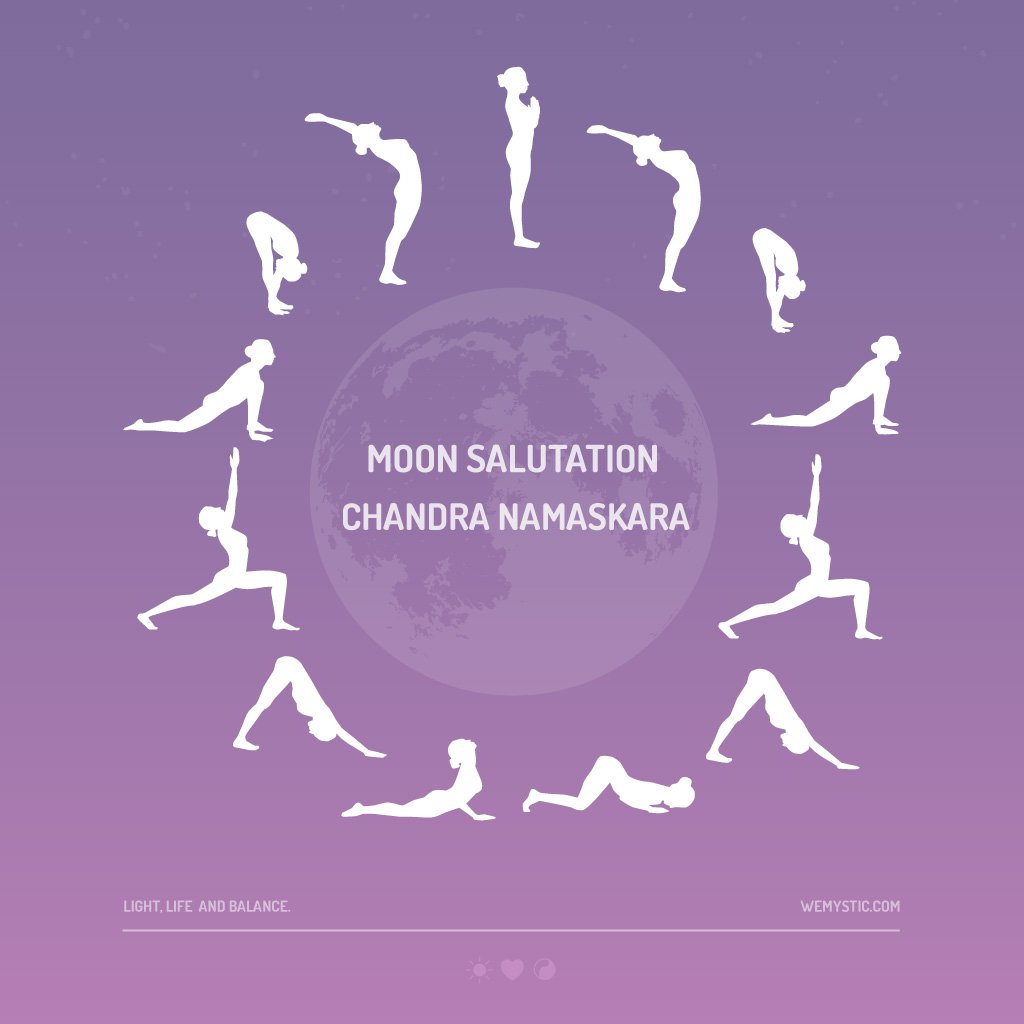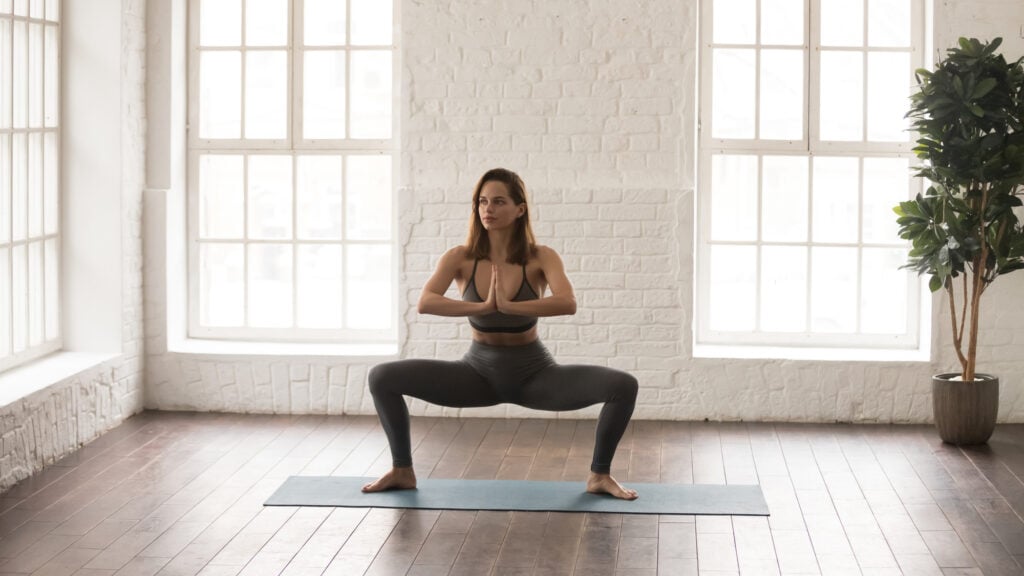Moon Salutation: how to master Chandra Namaskar

Moon Salutation is a yoga sequence, in Sanskrit, Chandra Namaskar. Complementary to the Surya Namaskar sequence, the Sun Salutation, it’s part of the balanced approach of energies yoga offers.
Like the sun comes out every day, with its energy of fire and action; the night and the moon always arrive, bringing the time to rest, look inside and calm down. That is the yin and yang, the masculine a feminine, the light and dark, everything that is needed to keep the balance.
In current Western life, we are connected and convinced we need to be always in the action mode, and many, many people project it the same way when it comes to the time to do a yoga practice.
The Moon Salutation sequence is here to help us getting into that calming soothing energy. In need of it? Let’s find more!
Moon Salutation: a thousand options
Maybe not a thousand, but Moon Salutation, like Sun Salutation, is, in fact, a sequence with many variations. This is, in fact, great, since you can choose the one that speaks more to your heart and helps you relaxing more easily.
There a few common ground aspects though:
- Can be part of a longer class or practiced by itself;
- It’s about cooling down and not heating up;
- Poses are of a meditative and calming characteristics;
- The connection with the breath is strong, but not since it’s a slower practice, it doesn’t need to be done in vinyasa (vinyasa equals one breath, one movement).
Moon Salutation, step-by-step
Consider that this is only one option out of many and that you can explore and search for other Moon Salutation sequences. We opted to share with you a simple version, that you can easily understand and put in practice by yourself.

1. Tadasana: standing tall, with your arms along with your body or in Anjali mudra, balance the weight on your body on your feet, open your chest and relax your shoulders.
2. Urdhva Hastasana: Inhale and lift your arms above your head.
3. Parsva Hurda Hastasana: exhale and bend your arms and upper body to the right side, stand straight again and repeat to the left. Back to Urdhva Hastasana, bring your palms together.
4. Uttanasana: exhale, bend forward keeping your hands close to your heart as you descend. In the end, bring your hands on the floor.
5. Anjaneyasana: step back with your left foot, bringing the foot and knee on the floor, and keeping your right knee bent. Inhale and lift your arms above your head. If possible, bring your palms together.
6. Adho Mukha Svanasana: exhale, bring your hands to the floor and step back to Adho Mukha Svanasana.
7. Bidalasana: exhale, bring your knees on the floor. Inhale and open your chest, while your tailbone goes up, your belly down.
8. Utthita Balasana: exhale and rest on your heels, entering Utthita Balasana. If you really need to rest, stay in this pose for as long as you feel it’s necessary.
9. Urdhva Mukha Svanasana/Bhujangasana: as you inhale, bring your chest forward and lift your torso. You can do it lifting your legs away from the floor, in the upward facing dog, or keeping your legs, knees and pubic bone on the floor, on the cobra pose.
10. Adho Mukha Svanasana: exhale and enter the downward-facing dog position.
11. Anjaneyasana: step forward with your left foot, bringing the knee bent and the right foot and knee on the floor. Inhale and raise your arms above your head, if possible, bring your hands together.
12. Uttanasana: exhale bring both of your hands on the floor and step forward entering Uttanasana.
13. Urdhva Hastasana: inhale and go back to a standing position, raiding your arms and hands.
14. Tadasana: exhale and lower your hands together in front of your heart.
Benefits of the Moon Salutation
As we stated before, the Moon Salutation and a calming, nesting, receptive energy. It can be done at any given time of the day, and it’s a great option for those who practice yoga at the night.
Physical benefits:
- Boosts sleeping;
- Workship openings;
- Improves heart-opening movements;
- Helps the respiratory system;
- It’s said to improve fertility.
Energetic benefits:
- Balances the chakras;
- Helps connect with the feminine energy;
- Reduces anxiety.
Remember that we all need the day and the night, the action and to stop, to be out there and to look inside. Work out that balance by adding some Moon Salutations to your practices. If you are wondering how, one last tip, do it on full and new moons!
You may also like:
- 5 indispensable floor asanas for your yoga practice
- Baddha Konasana: the butterfly pose
- Savasana: get to know more about this yoga pose
- Yoga poses: know some of them


